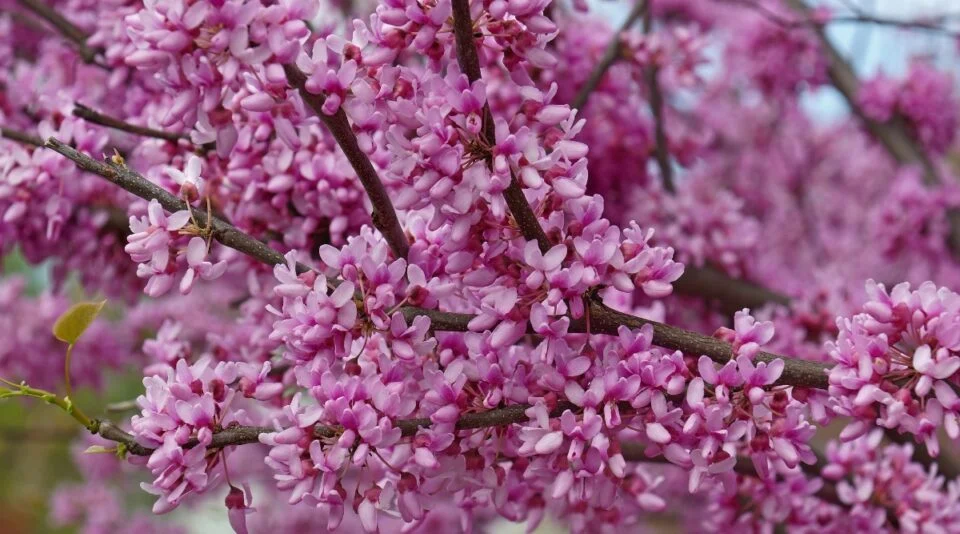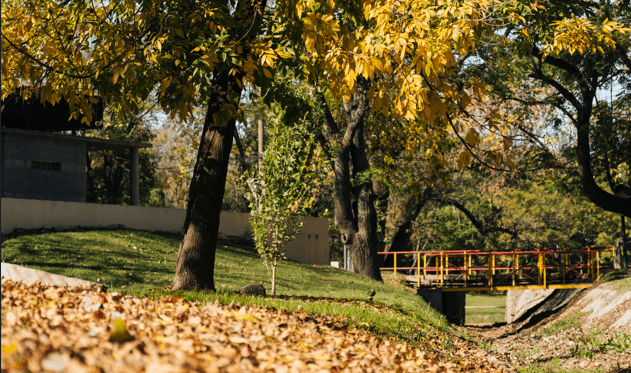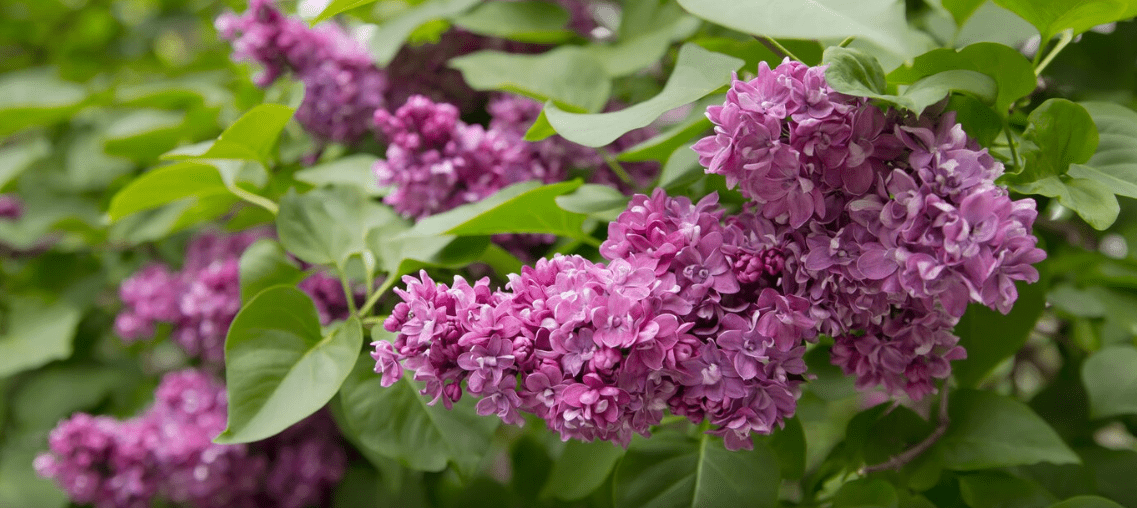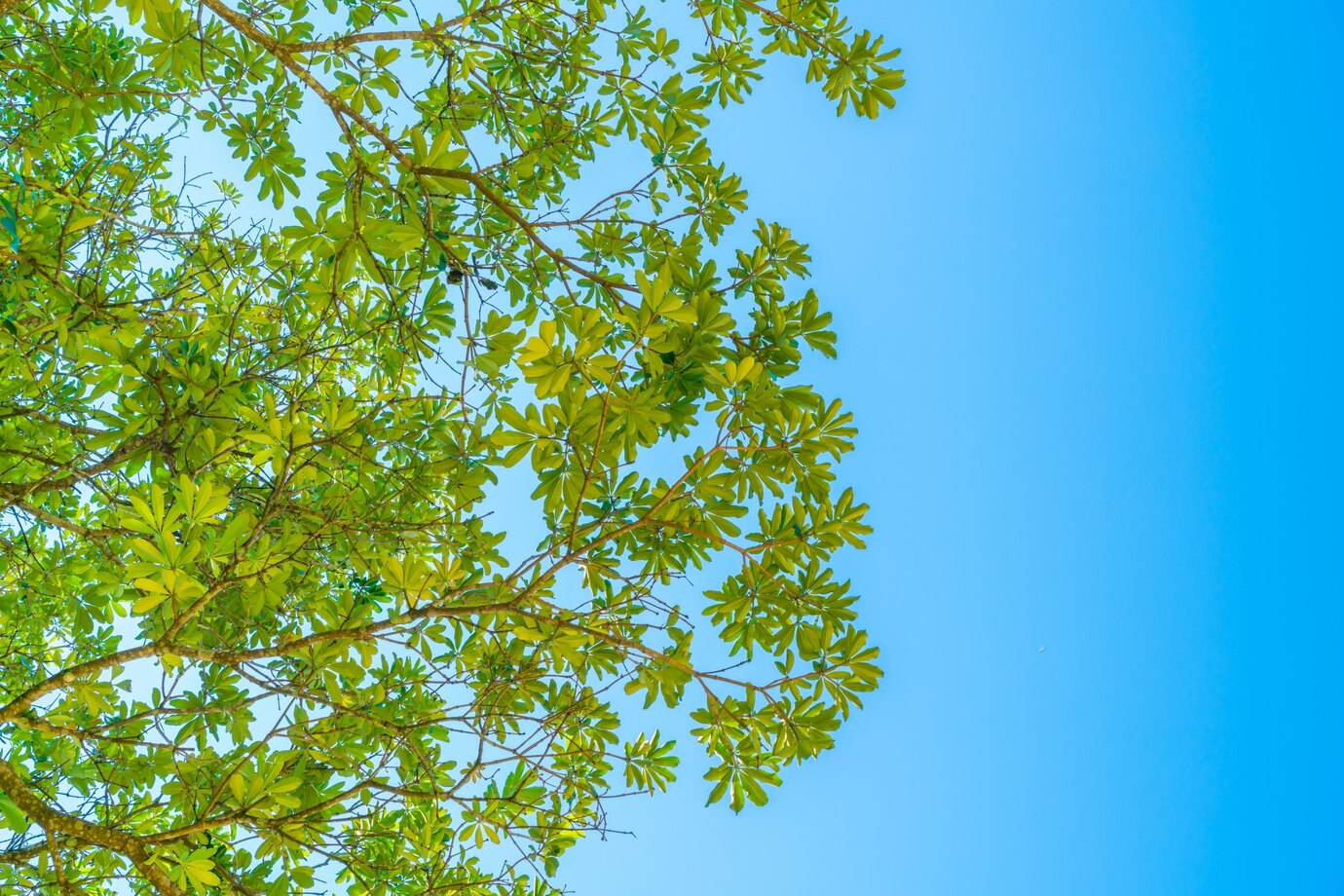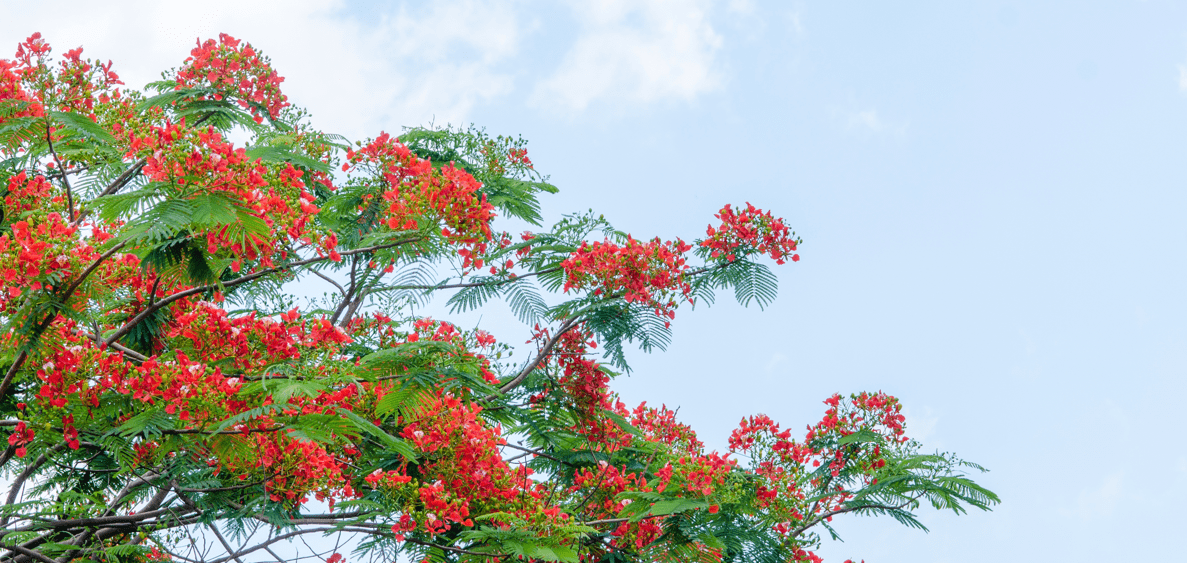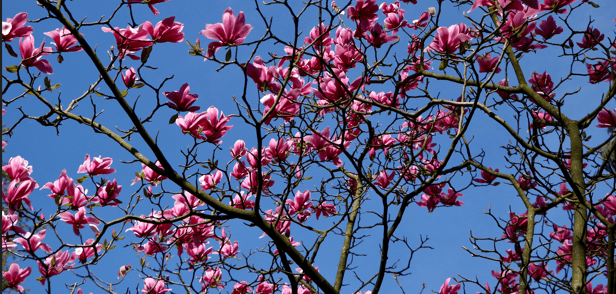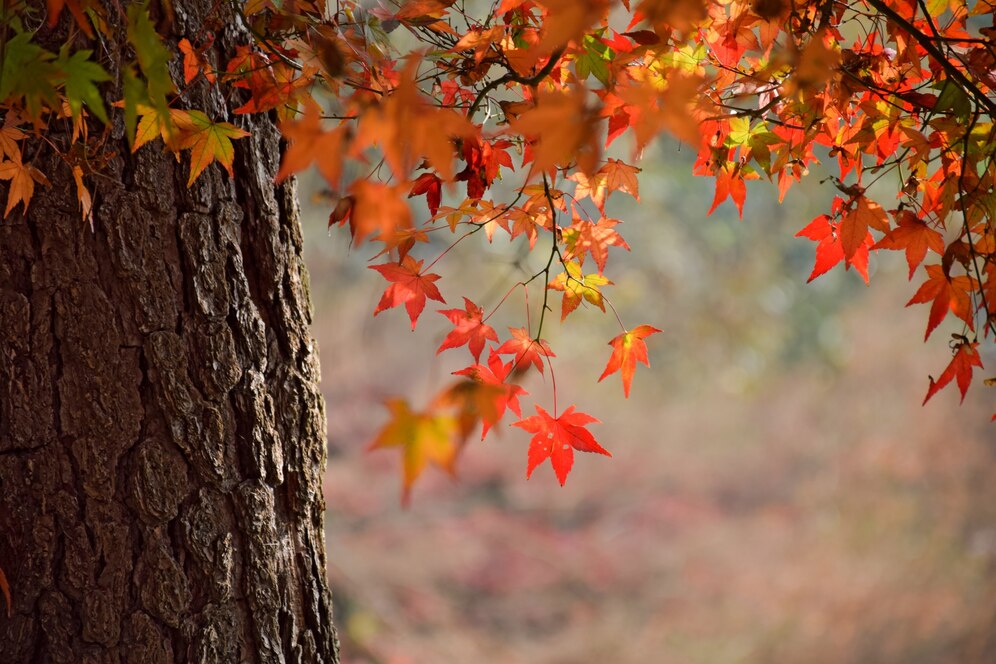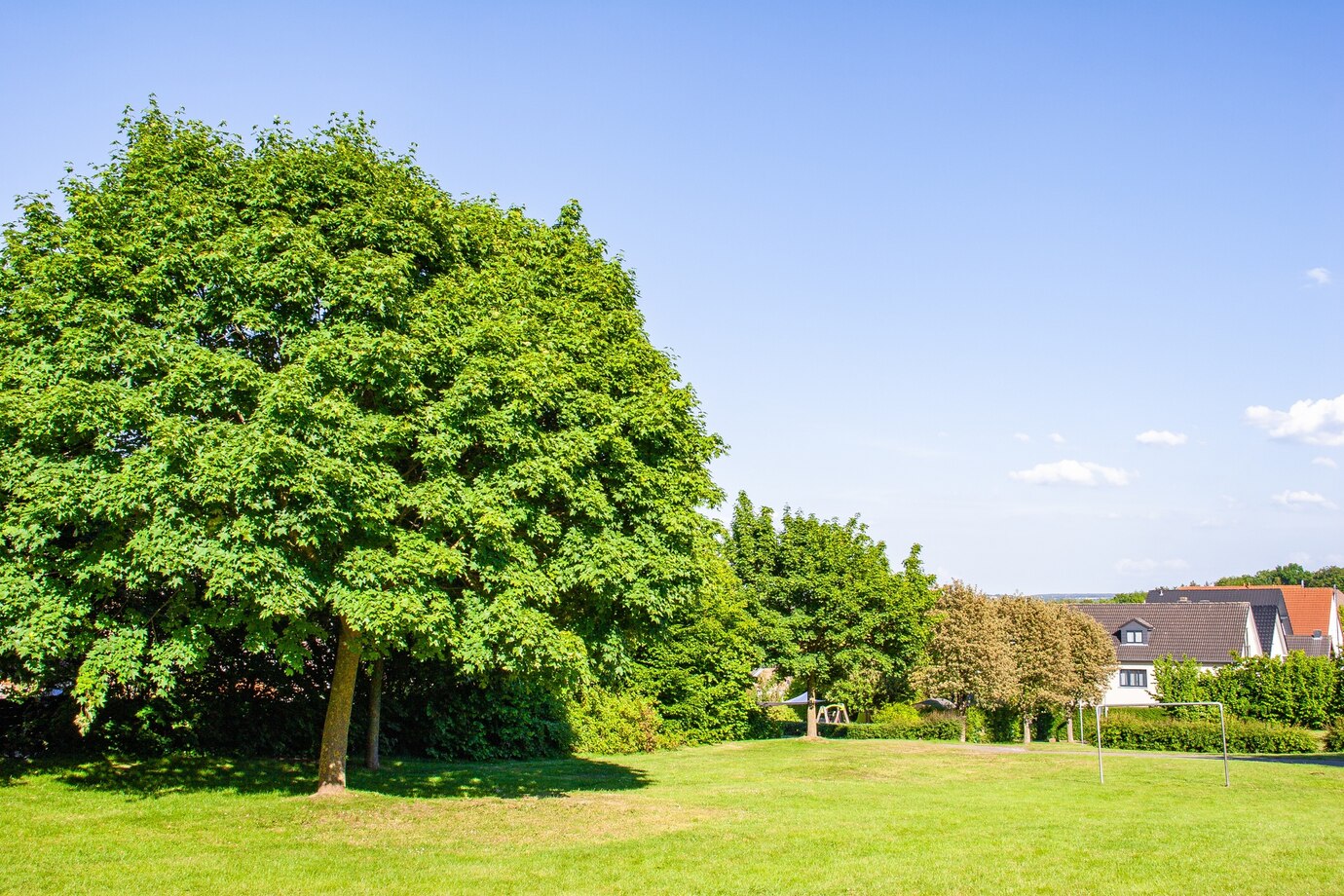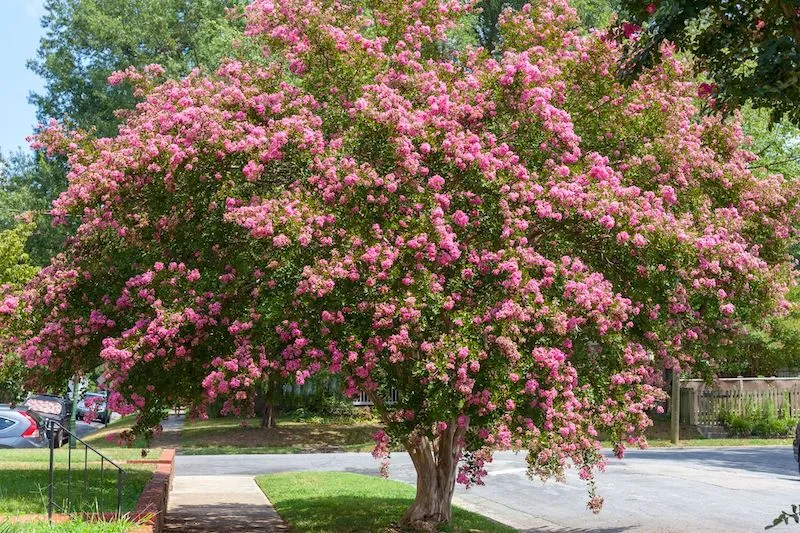Redbud trees are among the first trees to bloom in spring, and they certainly make a statement! While they may not be the most talked-about trees, their striking display of vibrant pink and purple flowers is hard to miss. These blossoms cover the bare branches before the leaves appear, making redbuds unforgettable during early spring strolls.
Surprisingly, redbuds are also quite low-maintenance. Once established, they require very little care to thrive in your yard. With a little guidance, you can enjoy a healthy, beautiful redbud tree year after year.
Table of Contents
ToggleTypes of Redbud Tree
Eastern redbuds come in a wide range of sizes and flower colors, making them a versatile choice for any landscape. Here are some popular varieties to consider:
‘Ruby Falls’ – A compact redbud with striking red to purple blooms. Its foliage starts out deep red or burgundy in spring and matures to rich green by summer.
‘Texas White’ – Known for its bright white flowers, this variety also features glossy green leaves, adding a crisp contrast to spring landscapes.
‘Forest Pansy’ – This smaller tree displays soft pink blossoms and heart-shaped leaves that shift to brilliant shades of red, burgundy, or orange in fall.
‘Ace of Hearts’ – Ideal for compact spaces, this dwarf redbud produces violet-pink flowers and has rich green, heart-shaped leaves. It thrives in USDA Zones 5–9.
‘Merlot’ – A compact, low-maintenance variety with rosy pink flowers and glossy leaves that blend red and green tones.
‘Silver Cloud’ – One of the most eye-catching cultivars, ‘Silver Cloud’ features variegated leaves in white and pink, paired with vivid rosy-pink blooms on bare branches in early spring.
Planting Eastern Redbud Tree
- Dig a hole in the soil roughly double the size of the root ball and about the same depth.
- Position your tree in the hole so that the top of the root ball sits just above the surrounding soil level. Planting too deep can cause stress and may even kill the tree.
- Before adding the soil back, fill the hole with water. New trees need plenty of moisture to help their roots settle and grow quickly.
- Refill the hole with soil and carefully firm it down to eliminate air pockets. Avoid stomping on the soil, as compacting it can hinder root growth.
- Apply a balanced, slow-release fertilizer to give your tree a strong, healthy start. This type of fertilizer is safe for young plants.
- Apply a thick layer of mulch (1-2 inches) around the base of your redbud, extending a few inches beyond the root zone. Mulching helps retain moisture and suppresses weeds. Be sure not to pile mulch against the trunk, as it can trap moisture and invite pests or diseases.
- Water thoroughly again until the soil is fully saturated. For the first month, soak the soil deeply at least twice a week, then reduce to once a week during months two and three. It’s better to water deeply less often than to give light daily watering. Using a hose with no attachments and letting water pool around the base works best.
Eastern Redbud Tree Care
Care for Eastern redbud tree is easy—just follow these simple steps:
Location
Redbud trees are quite adaptable, making it easy to find the right spot for them. They grow well in full sunlight to partial shade and tolerate different soil types as long as the soil drains well and doesn’t hold standing water.
Water
Once your redbud is established, it handles drought conditions well. However, during extended periods of heat and dryness, give it a deep watering once a week to help keep it healthy.
Fertilizer
Add a balanced, slow-release fertilizer in early spring for best growth and blooms. This supports your tree’s energy needs as it comes out of dormancy.
Pruning
Redbuds typically don’t need much pruning. If you do prune, do so right after the flowers fade to remove any dead, damaged, crowded, or crossing branches. Avoid pruning in winter, as it can reduce blooming the following spring.
Common Pests and Diseases
While redbuds usually require little maintenance, it’s important to watch for a few common problems and pests:
Botryosphaeria canker: Mulching in summer helps retain soil moisture and reduce drought stress, which can lead to this fungal disease. If cankers develop, prune the affected branches at least six inches below the damaged area to prevent spread.
Leaf-eating insects: Caterpillars, weevils, and leafhoppers may feed on redbud foliage. Remove heavily damaged leaves and treat the tree with an insecticide suited to the pest.
Verticillium wilt: This fungal disease causes yellowing and wilting leaves by attacking the roots. Prevent it by maintaining consistent soil moisture without overwatering. At the first sign of wilt, prune infected branches promptly. If the disease affects most of the tree, survival becomes unlikely.

